
![]()
Mount Moco is recognised as an Important Bird Area (Dean 2000) and forms part of the Western Angola Endemic Bird Area.
A total of 234 species (click here for list) have been recorded at the proposed Mount Moco Special Reserve (Mills et al. in prep). In addition to having a rich and varied avifauna, the area plays host to several Angolan endemic species, endemic subspecies and populations of montane species isolated from those in other African counties (like Cameroon, Uganda and Malawi). And, there are some other goodies found here too. The following species are of particular interest:
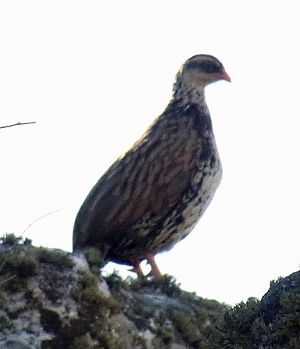 |
Swierstra's Francolin: an Endangered endemic that favours forest, forest edge and rank growth in gullies. This rare and highly threatened species is found at only a handful of localities, with Mount Moco having the only known viable population of this species. Extensive surveys of birds and forest at Mount Moco puts the best estimate at 75 pairs, which could be as much as 40% of the global population. (Ursula Franke) |
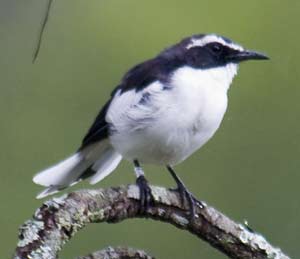 |
Angola Cave Chat: this unusual and attractive endemic, in its own genus, is rare at Mount Moco, known only from two old specimens to the north of the mountain (Fábio Olmos). |
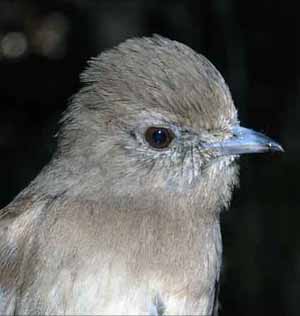 |
Angola Slaty Flycatcher: this inconspicuous Angolan endemic is found in most of the forest patches in the proposed Mount Moco Special Reserve, favouring forest edge and under-storey (Michael Mills) |
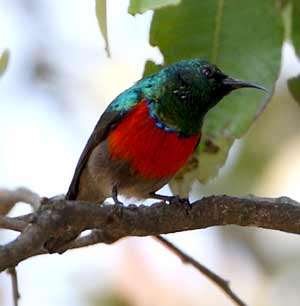 |
Ludwig's Double-collared Sunbird: a common Angolan endemic, found in forest and at forest edge (Tasso Leventis). |
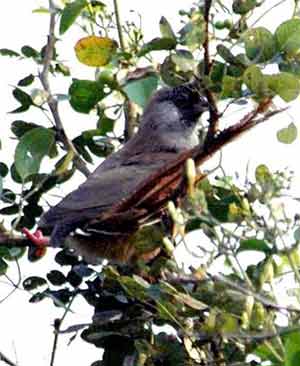 |
Red-backed Mousebird: another Angolan endemic, rather uncommon at Mount Moco and best sought further north along the coastal plain (Patricia Maldonado). |
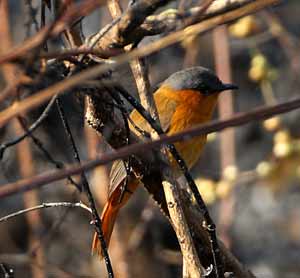 |
Bocage's Akalat: the bocagei subspecies, endemic to Angola, is a fairly common bird of the forest under-storey at Mount Moco (Tasso Leventis) |
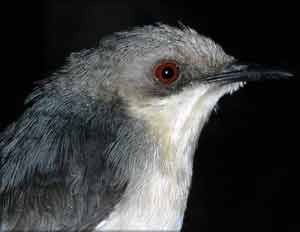 |
Grey Apalis: the endemic grandis subspecies is found commonly in forest patches of all sizes (Michael Mills). |
| Rock-loving Cisticola: fairly common around the edges of forest patches at Mount Moco. These birds belong to the endemic bailunduensis subspecies and have a very unusual song, so may represent a distinct species (Martim Melo) | |
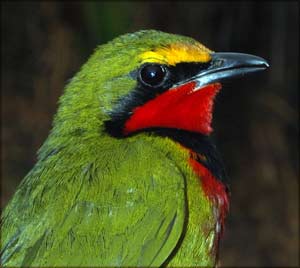 |
Perrin's Bushshrike: typically a bird of more tropical forest, although found sparsely at Mount Moco (Michael Mills). |
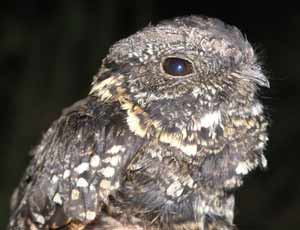 |
Ruwenzori Nightjar: the koesteri subspecies, endemic to Angola, is known from only a few localities in the country. It is fairly common at Mount Moco (Martim Melo) |
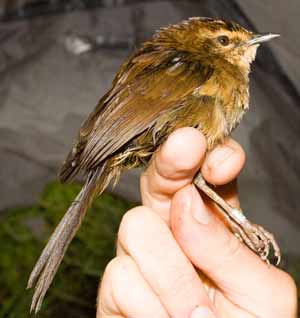 |
Evergreen Forest Warbler: yet another subspecies endemic to Angola (boultoni), this is a skulking species of the forest under-storey, easy to hear but difficult to see at Mount Moco (Fábio Olmos) |
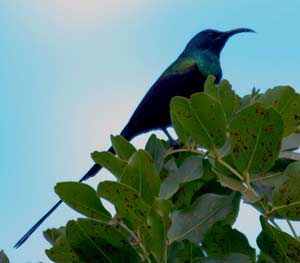 |
Bronzy Sunbird: the distinctive endemic subspecies (gadowi) is fairly common at lower altitudes (Fábio Olmos) |
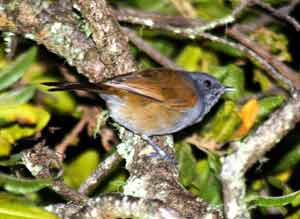 |
African Hill Babbler: a widespread African montane species, represented in Angola by the endemic ansorgei subspecies which occurs in the larger forest patches at Mount Moco (Fabio Olmos). |
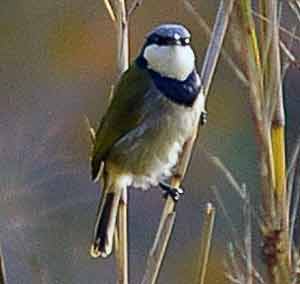 |
Black-collared Neolestes/Bulbul: a sought-after species found uncommonly at Mount Moco (Tony Dowd) |
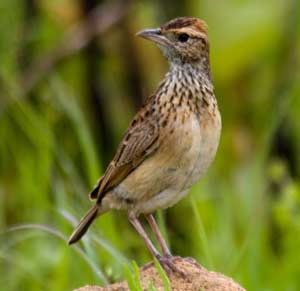 |
Angola lark : a localised lark with a striking song, quite common in the grasslands around Mount Moco (Fábio Olmos) |
 |
Lepe Cisticola: this race of Red-faced Cisticola, sometimes split, is common in rank growth in valleys at the base of the mountain (Fábio Olmos). |
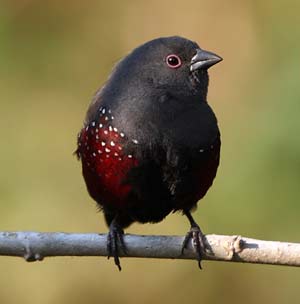 |
Dusky Twinspot: this localised and beautiful finch is common at Mount Moco, which is probably the best place in the world to see this species (Tasso Leventis) |
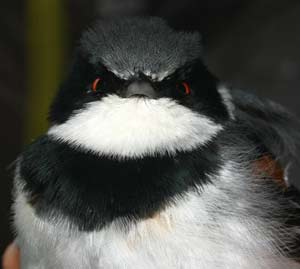 |
Margaret's Batis: the very first specimen of Margaret's Batis comes from Mount Moco. In Angola the endemic margaritae subspecies in known only from this mountain. It is a scarce resident found in the less-disturbed forests (Fábio Olmos). |
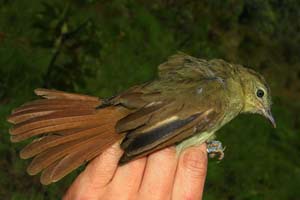 |
Cabanis's Greenbul: an uncommon greenbul at Mount Moco, favouring dense forest under-storey (Fábio Olmos) |
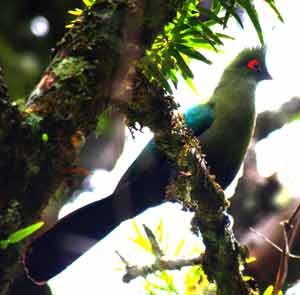 |
Schalow's Turaco: fairly conspicuous in wooded habitats around Mount Moco (Fábio Olmos) |
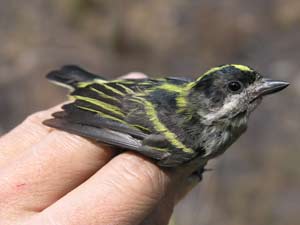 |
Western Green Tinkerbird: the angolensis subspecies, endemic to Angola, is fairly common in medium- and large-sized forest patches on Mount Moco (Martim Melo) |
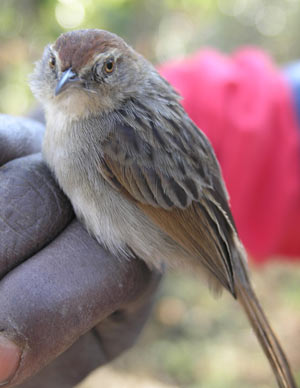 |
Wailing Cisticola: the Angolan subspecies namba is common in the grasslands on Mount Moco (Martim Melo) |
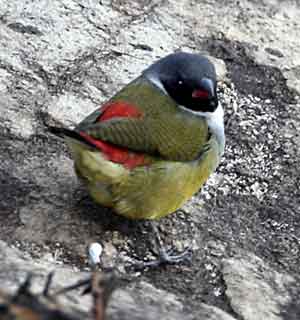 |
Swee Waxbill: the distinctive bocagei subspecies is endemic to Angola and common at Mount Moco (Tasso Leventis) |
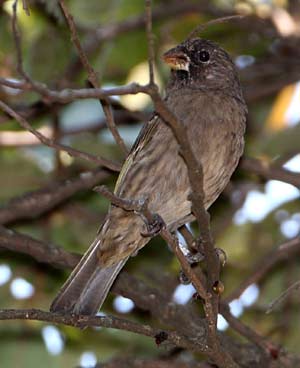 |
Thick-billed Seedeater: an isolated population of this montane species exists in Angola; it is uncommon in forest at Mount Moco (Tasso Leventis) |
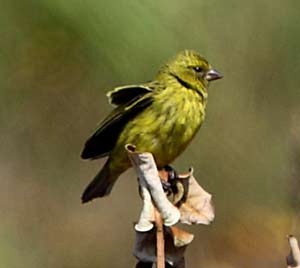 |
Yellow-crowned Canary: the endemic huillensis subspecies is common at Mount Moco (Tasso Leventis) |
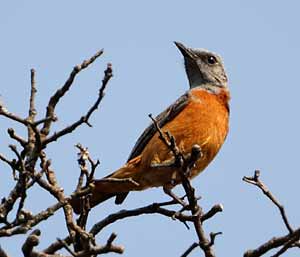 |
Miombo Rock Thrush: although typically a species of woodlands, Miombo Rock Thrush is regular in more disturbed forest patches on Mount Moco (Tasso Leventis) |
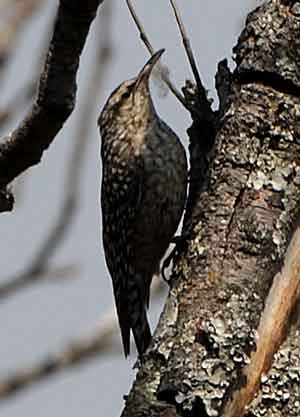 |
Spotted Creeper: widespread across the continent in woodlands, this species is regular in montane forest at Mount Moco (Tasso Leventis) |
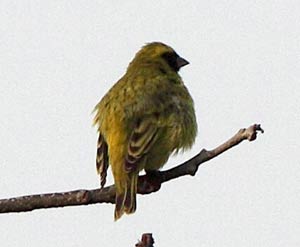 |
Black-faced Canary: this localised species, represented here by the endemic hildegardae subspecies, is uncommon at Mount Moco (Tasso Leventis) |
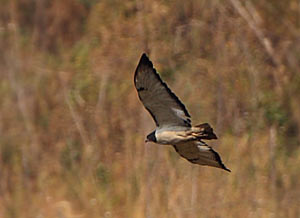 |
Augur Buzzard: one of the more conspicuous raptors at Mount Moco (Tasso Leventis) |
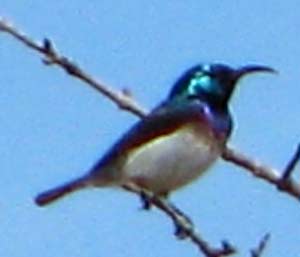 |
Oustalet's Sunbird: this generally scarce species is rather common around Mount Moco, one of the best places to see it (Alta de Vos).
|
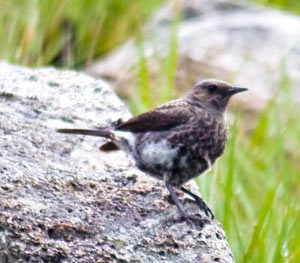 |
Mountain Wheatear: the nigricauda subspecies is endemic to the Angolan highlands and fairly common at Mount Moco. This is a female. (Fábio Olmos) |
| We're still after photos of the following | Fernando Po Swift: this Data Deficient species is known for certain from a single specimen from Mount Moco, although black swifts are regular in the area and may belong to this species. Laura's Woodland Warbler: the endemic laurae subspecies is known from only two localities in Angola, and is rare at Mount Moco, with only one recent record. |




